-
 Korea.net's 24-hour YouTube channel
Korea.net's 24-hour YouTube channel- NEWS FOCUS
- ABOUT KOREA
- EVENTS
- RESOURCES
- GOVERNMENT
- ABOUT US
View this article in another language
- 한국어
- English
- 日本語
- 中文
- العربية
- Español
- Français
- Deutsch
- Pусский
- Tiếng Việt
- Indonesian
Flora & Fauna of Korea #38
Korea.net publishes a series of articles, “Nature You Meet in the Mountains,” about the peninsula’s mushrooms, insects, trees and herbs & flowers.
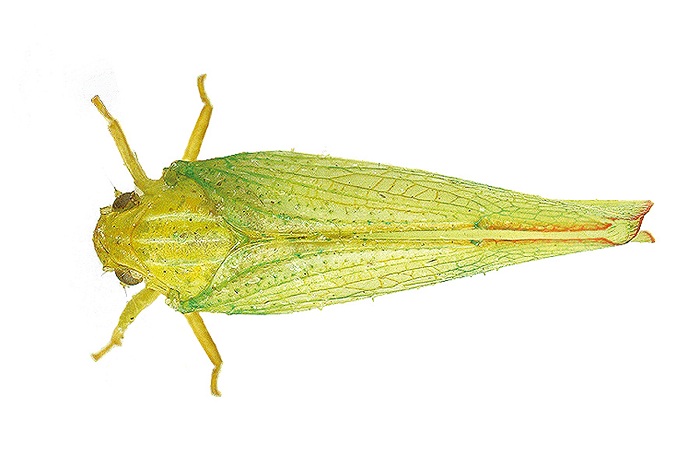
Insects
Name: 선녀벌레 Seonnyeobeollae
Scientific name: Geisha distinctissima (Walker)
Distribution: Korea, Japan, China and northeast Asia
This cicada is normally about five millimeters long with a 10-millimeter wingspan. It is yellowish green or light green. A few of them have a white or gray-white powder throughout the body. The head is smaller than the anterior part of the thorax. The frontal wings are relatively large and wide. They are circular, yellowish-green, non-transparent and have red stripes along the tips. The hind wings are well-developed and are transparent with hues of white and green.
Ecology: These bugs are mostly found only during one time of the year around the seas in the southern part of the peninsula, near farmlands and in warm-temperate forests. Adults can be observed in July and August. They normally inhabit trees, such as chestnut trees, tea trees, apricot trees and raspberry bushes.
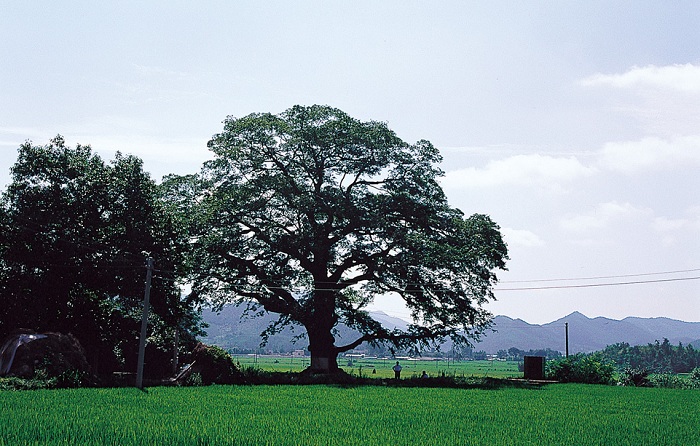
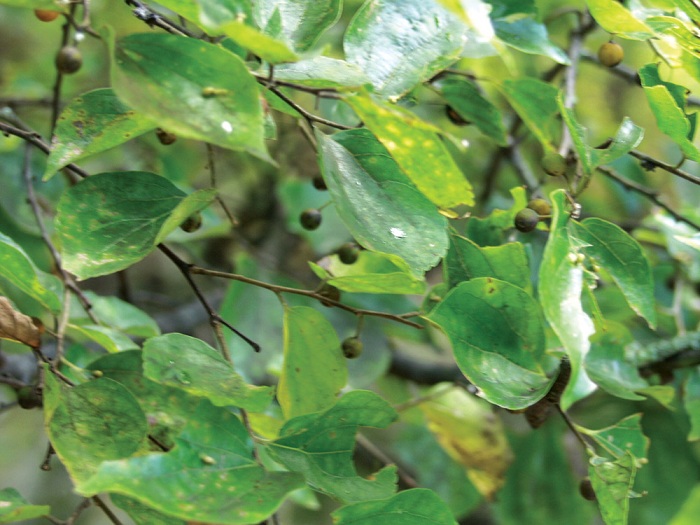
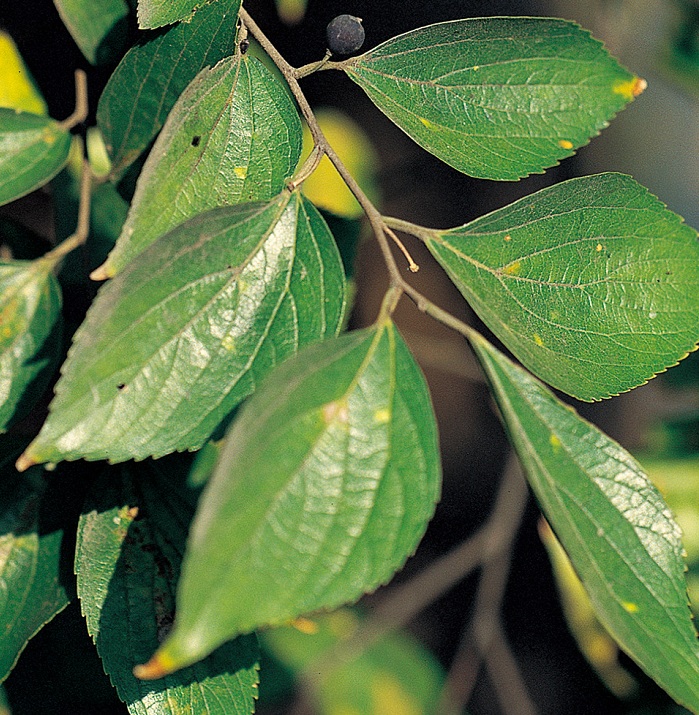
Trees
Name: 팽나무 Paengnamu
Scientific name: Celtis sinensis Pers.
Type: deciduous broadleaf tree
Blooming season: May
Bearing season: October
Distribution: mountains nationwide
This mountain tree is about 20-meters tall and 1-meter around. The bark is grayish-brown. The tree's newly sprouted branches are black brown and covered in fine hairs. The leaves are alternating and can either be ovate or elliptical. The tip of the leaves is usually acute. They give bloom to a polygamous flower that has both bisexual and unisexual flowers on the same plant. The male flowers grow from the axillae of the new branches. This tree has one to three female flowers per plant. It bears a stone-like pinecone, round and yellowish-red in color.
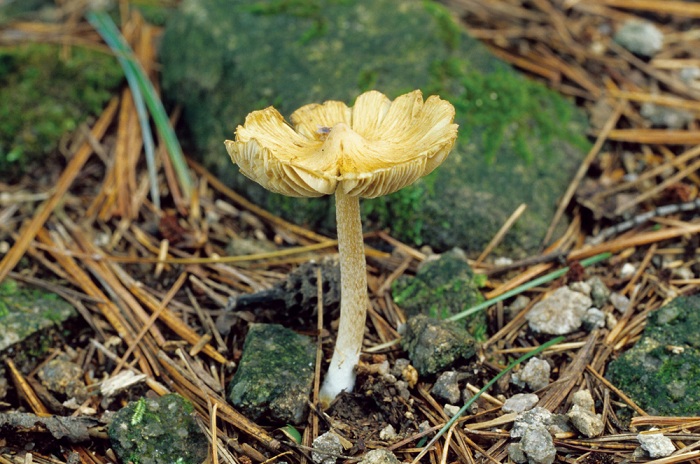
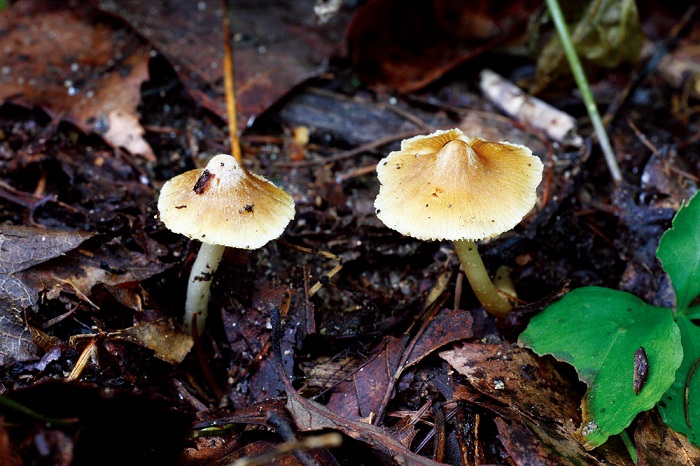
Mushrooms
Name: 솔땀버섯 Solddambeoseot
Scientific name: Inocybe rimosa (Bull.) P. Kumm.
Type: symbiotic fungus
Print: brown
dangerous to eat
This fungus develops alone or in clusters from the earth in forests. The cap is about 2 to 6.5 centimeters in diameter. It is conical or bell-shaped at first, but gradually becomes broadened with a sharp central bump as it ages. The surface is silky, yellowish brown with a dark brown color in the central parts. It becomes radially separated. The gills pull away from the stem with age, and close or get more crowded as they become grayish brown. The stipe is about 3.5 to 8 centimeters long and 3 to 9 millimeters in diameter. The stipe is silky, too, and the color is lighter than that of the cap.
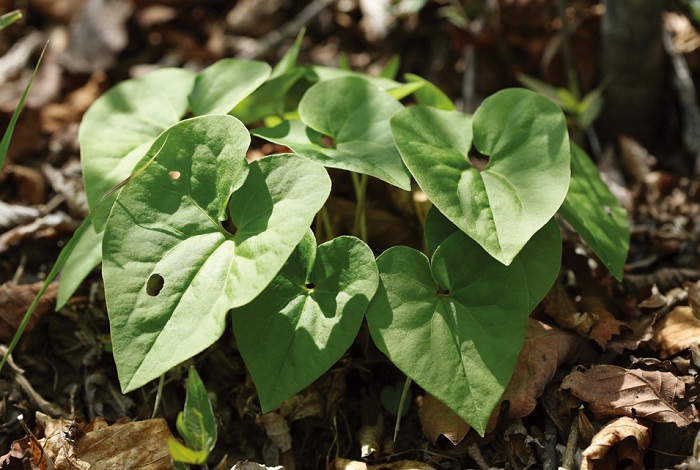
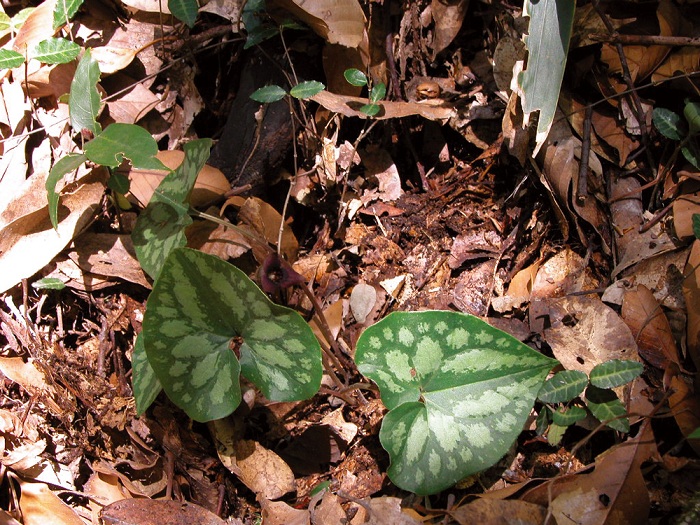
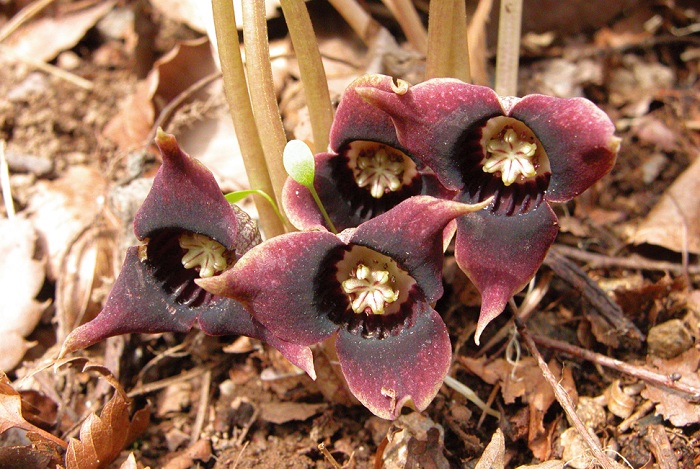
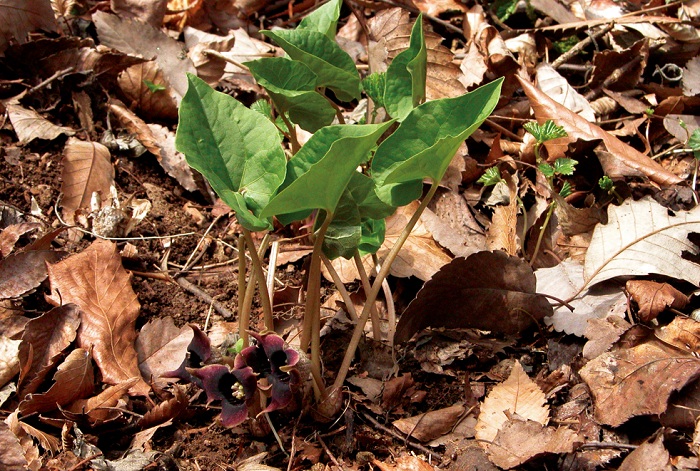
Herbs & Flowers
Name: 족도리풀 Jokdoripul
Scientific name: Asarum sieboldii Miq.
Blooming season: April
Distribution: mountains nationwide
This perennial grows to about 4 to 10 centimeters tall. The rhizomes from underground have many nodes and tend to grow up at an angle. It puts down roots from the nodes. Each of the nodes in the rhizome develops two leaves, which are cordate with a plain edge and a long leafstalk. The flowers are dark brown with a hue of violet and are 1 to 2 centimeters in diameter. The petals are separated into three pieces. It bears small berries.
*This series of article about Korea’s insects, trees, mushrooms and herbs & flowers has been made possible through the cooperation of the Korea National Arboretum.
Korea.net publishes a series of articles, “Nature You Meet in the Mountains,” about the peninsula’s mushrooms, insects, trees and herbs & flowers.

Insects
Name: 선녀벌레 Seonnyeobeollae
Scientific name: Geisha distinctissima (Walker)
Distribution: Korea, Japan, China and northeast Asia
This cicada is normally about five millimeters long with a 10-millimeter wingspan. It is yellowish green or light green. A few of them have a white or gray-white powder throughout the body. The head is smaller than the anterior part of the thorax. The frontal wings are relatively large and wide. They are circular, yellowish-green, non-transparent and have red stripes along the tips. The hind wings are well-developed and are transparent with hues of white and green.
Ecology: These bugs are mostly found only during one time of the year around the seas in the southern part of the peninsula, near farmlands and in warm-temperate forests. Adults can be observed in July and August. They normally inhabit trees, such as chestnut trees, tea trees, apricot trees and raspberry bushes.



Trees
Name: 팽나무 Paengnamu
Scientific name: Celtis sinensis Pers.
Type: deciduous broadleaf tree
Blooming season: May
Bearing season: October
Distribution: mountains nationwide
This mountain tree is about 20-meters tall and 1-meter around. The bark is grayish-brown. The tree's newly sprouted branches are black brown and covered in fine hairs. The leaves are alternating and can either be ovate or elliptical. The tip of the leaves is usually acute. They give bloom to a polygamous flower that has both bisexual and unisexual flowers on the same plant. The male flowers grow from the axillae of the new branches. This tree has one to three female flowers per plant. It bears a stone-like pinecone, round and yellowish-red in color.


Mushrooms
Name: 솔땀버섯 Solddambeoseot
Scientific name: Inocybe rimosa (Bull.) P. Kumm.
Type: symbiotic fungus
Print: brown
dangerous to eat
This fungus develops alone or in clusters from the earth in forests. The cap is about 2 to 6.5 centimeters in diameter. It is conical or bell-shaped at first, but gradually becomes broadened with a sharp central bump as it ages. The surface is silky, yellowish brown with a dark brown color in the central parts. It becomes radially separated. The gills pull away from the stem with age, and close or get more crowded as they become grayish brown. The stipe is about 3.5 to 8 centimeters long and 3 to 9 millimeters in diameter. The stipe is silky, too, and the color is lighter than that of the cap.




Herbs & Flowers
Name: 족도리풀 Jokdoripul
Scientific name: Asarum sieboldii Miq.
Blooming season: April
Distribution: mountains nationwide
This perennial grows to about 4 to 10 centimeters tall. The rhizomes from underground have many nodes and tend to grow up at an angle. It puts down roots from the nodes. Each of the nodes in the rhizome develops two leaves, which are cordate with a plain edge and a long leafstalk. The flowers are dark brown with a hue of violet and are 1 to 2 centimeters in diameter. The petals are separated into three pieces. It bears small berries.
*This series of article about Korea’s insects, trees, mushrooms and herbs & flowers has been made possible through the cooperation of the Korea National Arboretum.
Most popular
- First hearing-impaired K-pop act hopes for 'barrier-free world'
- 'Mad Max' director impressed by 'cinema-literate' Korean viewers
- Romanian presidential couple visits national cemetery
- 'Korean mythology is just as wonderful as Greek and Roman'
- President Yoon, Japan PM pledge better trilateral ties with US













